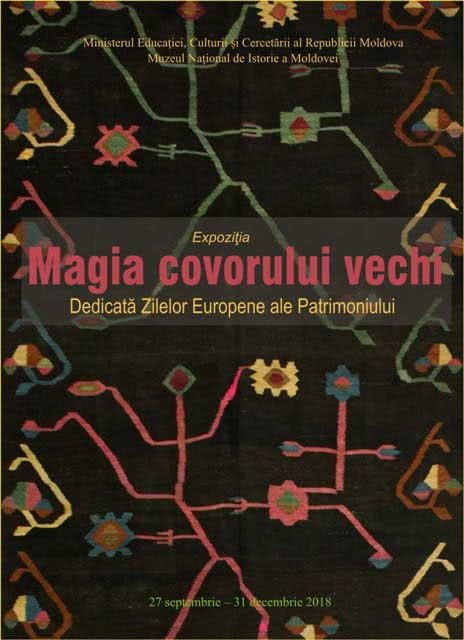On the occasion of the European Heritage Days the National Museum of History of Moldova opened the exhibition "The Magic of the Old Carpet". The even took place on Thursday, September 27, 2018, at 15.00.
Moldovan carpets on display are dated with the end of the 18th - beginning of the 20th centuries and represent the collection of the National Museum of History of Moldova. Some of them are exhibited for the first time.
The museum carpet collection has been formed in the last decades of the 20th century by acquisitions, donations and transfers, counting today more than 250 pieces of outstanding documentary and artistic value. The collection includes: traditional Moldovan carpets, contemporary carpets, carpets dedicated to special events in social-political life, carpets of memorial value, tapestries, etc.; woolen fabrics of different sizes and destinations.
The pieces reflect a multitude of motifs and ornamental compositions, specific to the Moldovan rug. The most widespread motives in ornamentation of woolen fabrics are vegetal and geometric, the representation of birds, man, tools, and so on.
Among the vegetal motifs, we find the tree of life, the vase and bouquets of flowers, branches, garlands, fruits, etc., all of which are stylized. The "Tree of Life" motive has various forms which embodies the fruitful force of the living nature or tree of wisdom, the tree of the nation. This particular ornamental motif is reproduced on an 18th-century wall rug presented in the exhibition, which is also the oldest wool fabric in the collection of the museum.
The most common geometric motifs are straight and curved transverse spars, triangles, diamonds, squares, stars, teeth, hooks, broken lines, and so on. "The Stars" rug is worked in the best traditions of the Moldovan carpet, dated to the first half of the 19th century. The light green central field décor consists of several rows of eight-pointed stars, and the dark red border is decorated with polychrome diamonds. The eight-pointed star symbolizes the time engine, the regenerative energy.
Often, along with geometric and vegetal figures is represented the face of women considered symbol of life and fertility.
On Moldovan carpets are often stylized birds - cocks, geese, ducks, peacocks; different insects - beetle, spider; monograms, signs and year of making. Many of these ornamental motifs, in various variants, can be seen on the pieces from the exhibition.
"The Magic of the Old Carpet" exhibition contributes to the promotion of national cultural values, which are part of the cultural heritage of humanity. It will be open to the public until December 31, 2018.











 31 August 1989 St., 121 A, MD 2012, Chisinau, Republic of Moldova
31 August 1989 St., 121 A, MD 2012, Chisinau, Republic of Moldova

















































